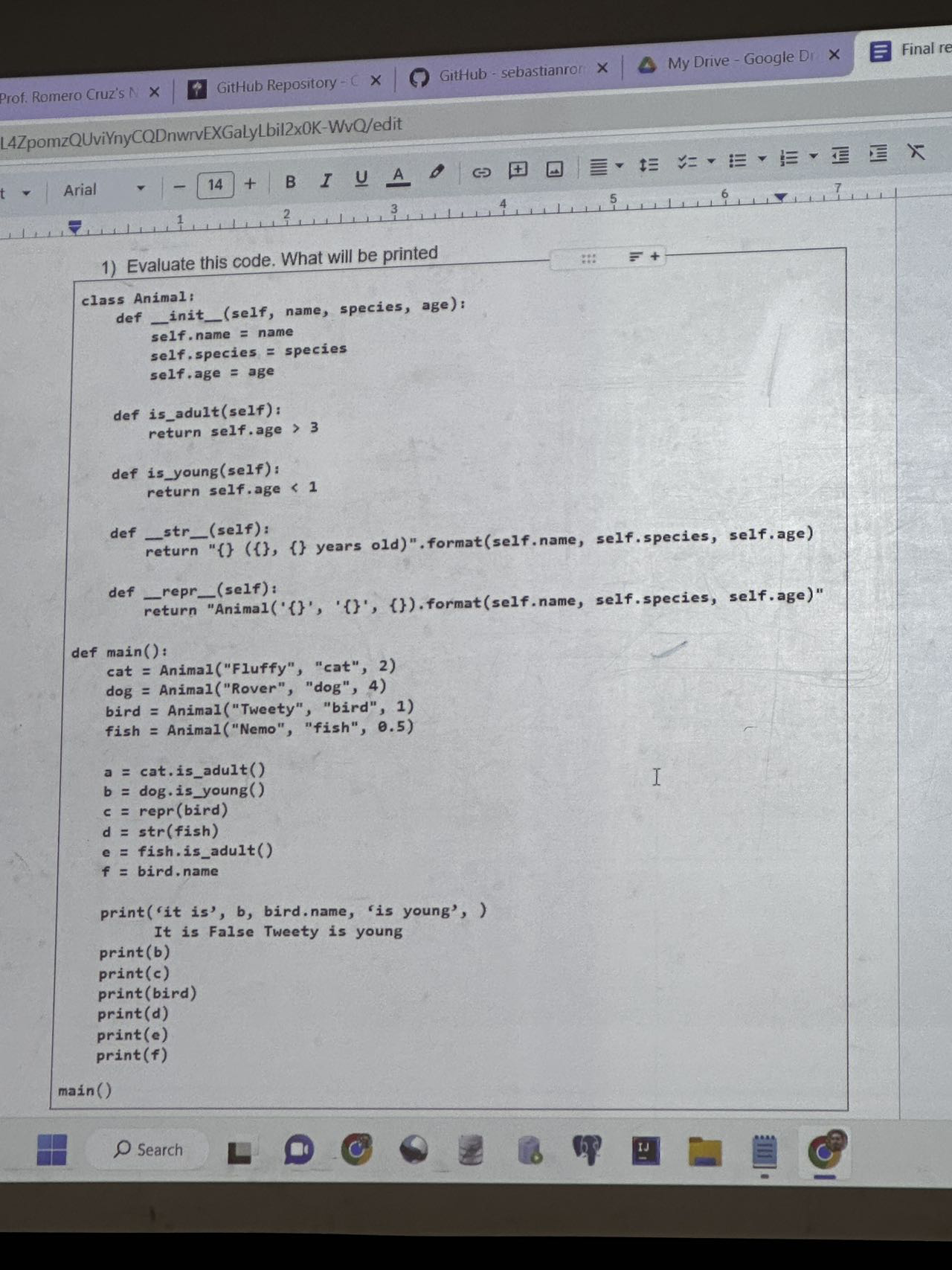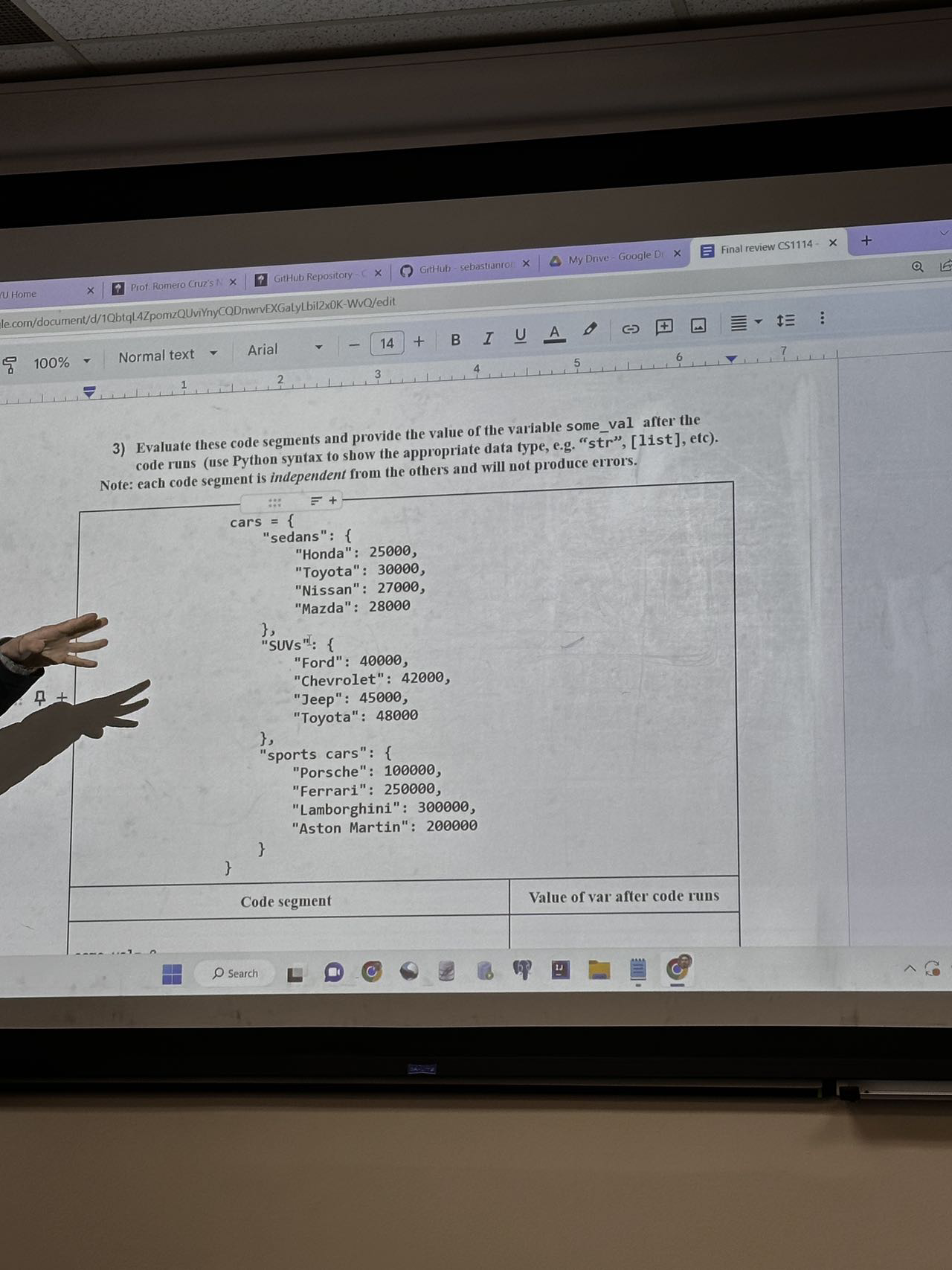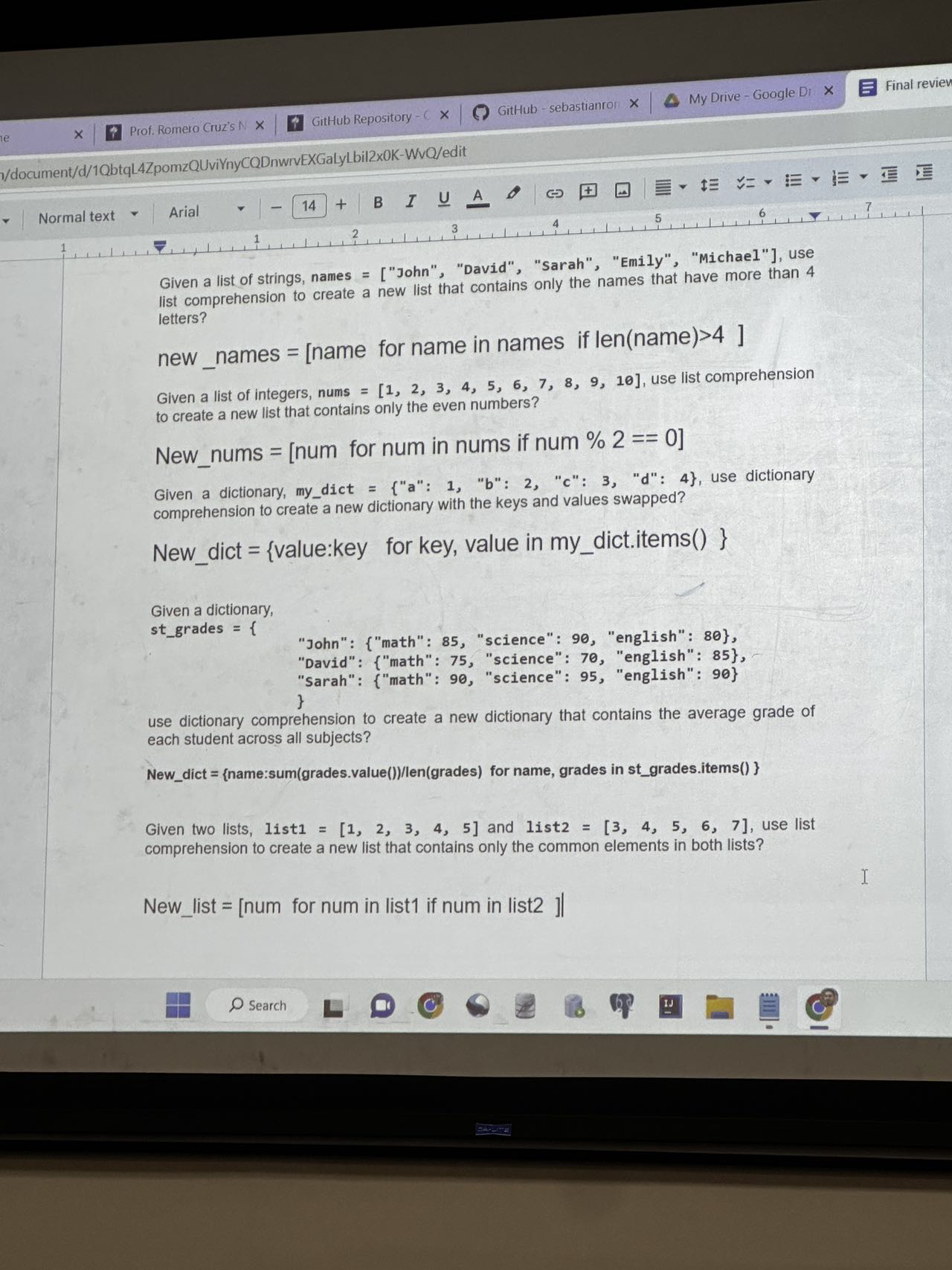NYU – Tandon School of Engineering True Exam – 16 December 2021







- Evaluate this code. What will be printed
class Animal:
def __init__(self, name, species, age):
self.name = name
self.species = species
self.age = age
def is_adult(self):
return self.age > 3
def is_young(self):
return self.age < 1
def __str__(self):
return "{} ({}, {} years old)".format(self.name, self.species, self.age)
def __repr__(self):
return "Animal('{}', '{}', {})".format(self.name, self.species, self.age)
def main():
cat = Animal("Fluffy", "cat", 2)
dog = Animal("Rover", "dog", 4)
bird = Animal("Tweety", "bird", 1)
fish = Animal("Nemo", "fish", 0.5)
a = cat.is_adult()
b = dog.is_young()
c = repr(bird)
d = str(fish)
e = fish.is_adult()
f = bird.name
print('It is', b, bird.name, "is young")
print(b)
print(c)
print(bird)
print(d)
print(e)
print(f)Give a list of strings, name = ["John", "David", "Sarah", "Emily", "Michael"],use list comprehension to create a new list that contains only the names that have more than 4 letters?
new_names = [name for name in names if len(name) > 4]Given a list of integers, nums = [1, 2, 3, 4, 5, 6, 7, 8, 9, 10] , use list comprehension to create a new list that contains only the even numbers?
New_nums = [num for num in nums if num % 2 == 0]Given a dictionary, my_dict = {"a": 1, "b": 2, "c": 3, "d": 4}, use dictionary comprehension to create a new dictionary with the keys and values swapped?
New_dict = {value:key for key, value in my_dict.items()}my_dict = {"a": 1, "b": 2, "c": 3, "d": 4}
new_dict = {}
for k, v in my_dict.items():
# print(k, v)
new_dict[v] = k
print(new_dict)Given a dictionary,
st_grades = {
"John": {"math": 85, "science": 90, "english": 80},
"David": {"math": 75, "science": 70, "english": 85},
"Sarah": {"math": 90, "science": 95, "english": 90}
}use dictionary comprehension to create a new dictionary that contains the average grade of each student across all subjects?
with open("file.csv", "r") as f:
line = f.readline()
while line:
print(line.strip().split(","))
line = f.readline()# 定义一个名为 get_row_values 的函数,它接受文件名和行号作为参数。
def get_row_values(filename, row_number):
try:
# 使用 'r'(读取)模式打开文件。
with open(filename, 'r') as file:
# 使用 readlines() 方法读取文件中的所有行,并将它们存储为一个名为 lines 的列表。
lines = file.readlines()
# 0123456
# 检查给定的行号是否在文件的行数范围内。
if 0 < row_number <= len(lines):
# 获取指定行号的数据,注意行号从 1 开始,因此要减去 1。
row_data = lines[row_number - 1]
# 使用 strip() 方法删除行首和行尾的空白字符(包括换行符)。
row_data = row_data.strip()
# 使用 split(',') 方法将行数据分割成一个列表,假设文件是 CSV 格式,用逗号分隔字段。
row_data = row_data.split(',')
# 返回分割后的数据列表。
return row_data
else:
# 如果行号超出范围,则输出错误信息并返回一个空列表。
print("Error: Row number is out of range.")
return []
except FileNotFoundError:
# 如果文件未找到,则输出错误信息并返回一个空列表。
print(f"Error: File '{filename}' not found.")
return []
except Exception as e:
# 如果遇到任何其他错误,输出错误信息并返回一个空列表。
print(f"Error: {e}")
return []
# 示例使用:
filename = "file.txt"
row_number = 2
result = get_row_values(filename, row_number)
print(result)公众号:AI悦创【二维码】

AI悦创·编程一对一
AI悦创·推出辅导班啦,包括「Python 语言辅导班、C++ 辅导班、java 辅导班、算法/数据结构辅导班、少儿编程、pygame 游戏开发、Web、Linux」,全部都是一对一教学:一对一辅导 + 一对一答疑 + 布置作业 + 项目实践等。当然,还有线下线上摄影课程、Photoshop、Premiere 一对一教学、QQ、微信在线,随时响应!微信:Jiabcdefh
C++ 信息奥赛题解,长期更新!长期招收一对一中小学信息奥赛集训,莆田、厦门地区有机会线下上门,其他地区线上。微信:Jiabcdefh
方法一:QQ
方法二:微信:Jiabcdefh

更新日志
1c35a-于aed17-于7e20c-于6c9c1-于5b064-于a6de4-于71960-于e4812-于